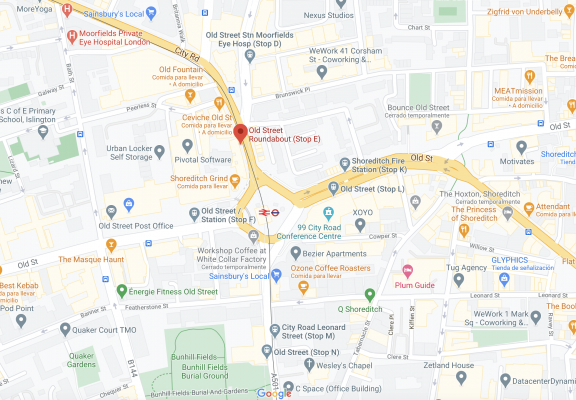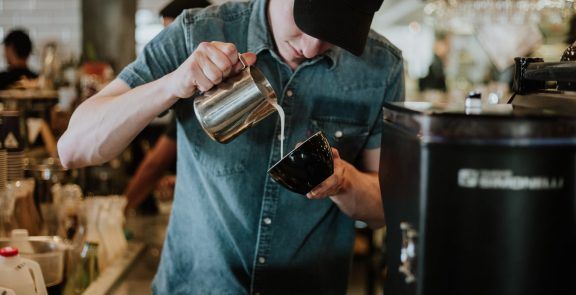

Fast Food 2.0: Are these the new atlas?
IN A NUTSHELL:
Creating country imagery that avoids being cliché or politically incorrect is a challenge. A quick look at the new generation of fast food chains in the UK lets us envisage some avenues for development.
THE GREAT STRATEGIC TAKEOUT:
When we need to reflect the origin, inspiration or provenance of ingredients, recipes, products or messages, it is essential to do this with a contemporary approach, aligning the values of both geographies.
Why should I read this?
Because sometimes, in response to a strategic need, we have to create imagery for brands and products that is associated with a particular country.
One of the consequences of our current situation is real constraints on mobility and the discovery of new cultural and expressive imagery in person. This offers a window of opportunity for companies and brands, who can assume the role of catalysts and satiate that desire for discovery and knowledge felt by consumers and other strategic audiences through their truth.
What are we talking about?
A quick physical or virtual stroll through Shoreditch (London, UK) shows us how geographical imagery linked to gastronomy is being presented to the general public. In an area spanning just under 2 square kilometres, there are around 20 establishments belonging to large chains that are presenting a vision of China, Vietnam, Japan, Colombia, Mexico and even Spain that is far from what we are used to.
These chains are projecting European values onto these geographies, seeking common ground and shying away from those “travel agent” clichés. The result is the creation of emotional relationships that break barriers to unfamiliar cuisine, encourage repeat business and premiumise fast food.
Leon, Wahaca, Busaba, Itsú, Tonoktsu, Yea, Andina, Brindisa are just some examples. And although the latest culinary trends are venturing into even greater specialisations in combining geographies with specific gastronomic decisions (plant-based, gluten-free…), the fact that many of these chains have been in the market for over 10 years illustrates and serves to assure us of a solid path and a richness in their proposals that is extremely inspiring at the present time.
Links and what to focus on:
- The naming of the chains: easy to identify the origin
- Menus: Europeanised recipes respecting ingredients
- Ways to present dishes (portions, composition) communication and engagement with consumers
- Description of ingredients, processes and recipes
WHY YOU SHOULD BE INTERESTED:
European consumers, and Spanish consumers among them for the first time, are increasingly open to exploring new geographical origins in the form of recipes, messages, content and experiential proposals. However, there is a real risk of falling into clichés and being culturally insensitive, so we must take advantage of consumers’ openness to portray other cultures on the basis of shared discovery, empathy and collaboration. Now is the time.
What tension does it relieve?
Openness to new cultures from familiar and “safe” surroundings (brands, occasions and categories established in the minds of consumers).
Who might be interested?
All categories, but especially those with targets that are more akin to a need state of discovery, openness and renewed tradition.
Where do I implement it?
In product/experience innovation, in communication (advertising and live), enriching ranges, special editions, packaging and content.
How innovative is it?
Although these proposals have been revamping “Premium” fast food in countries like the UK or Germany for many years, now is the time for the mainstream brands to put their learning into practice. In markets that are gradually opening up to new flavours, ingredients and origins, we can learn from these examples.
Cómo lo aplico:
Con cuidado, el riesgo de insensibilidad cultural es muy elevado si no contamos con información robusta, objetiva y creíble sobre el imaginario que queramos explorar e integrar.
Cómo de innovador es:
Aunque en países como UK o Alemania estas propuestas llevan muchos años renovando el fast food “Premium” en grandes ciudades, ahora es el momento clave para que las marcas mainstream incorporen los aprendizajes. En mercados que se abren paulatinamente a nuevos sabores, ingredientes y procedencias, podemos aprender de estos ejemplos.
Key concepts:
Imagery, exoticism, differentiation, fast food, premium, geography.
I WANT IT FOR MY COMPANY/BRAND. WHAT DO I NEED TO KNOW?
Who is using it already?
More than 30 fast food 2.0 chains in the UK are taking advantage of the empathetic nuances of the culture and cuisine of countries and regions from all over the world. Those that could inspire Spanish strategists and marketers the most are Leon, Wahaca, Itsú and Veggie Pret.
Things to keep in mind:
Respecting cultures and origins is key. We need to have experts in these cultures and steer clear of obvious media references (in films, music, events) that may have betrayed values and preferences.
How do I get a clearer idea?
- Spending a few minutes to look at the references on this map.
- Buying the recipe books that have been published by some chains such as Leon or Itsú.
How do I share it with my network?
“We can highlight the origin/ingredients of our products by connecting with our consumers in an empathetic and contemporary way”



